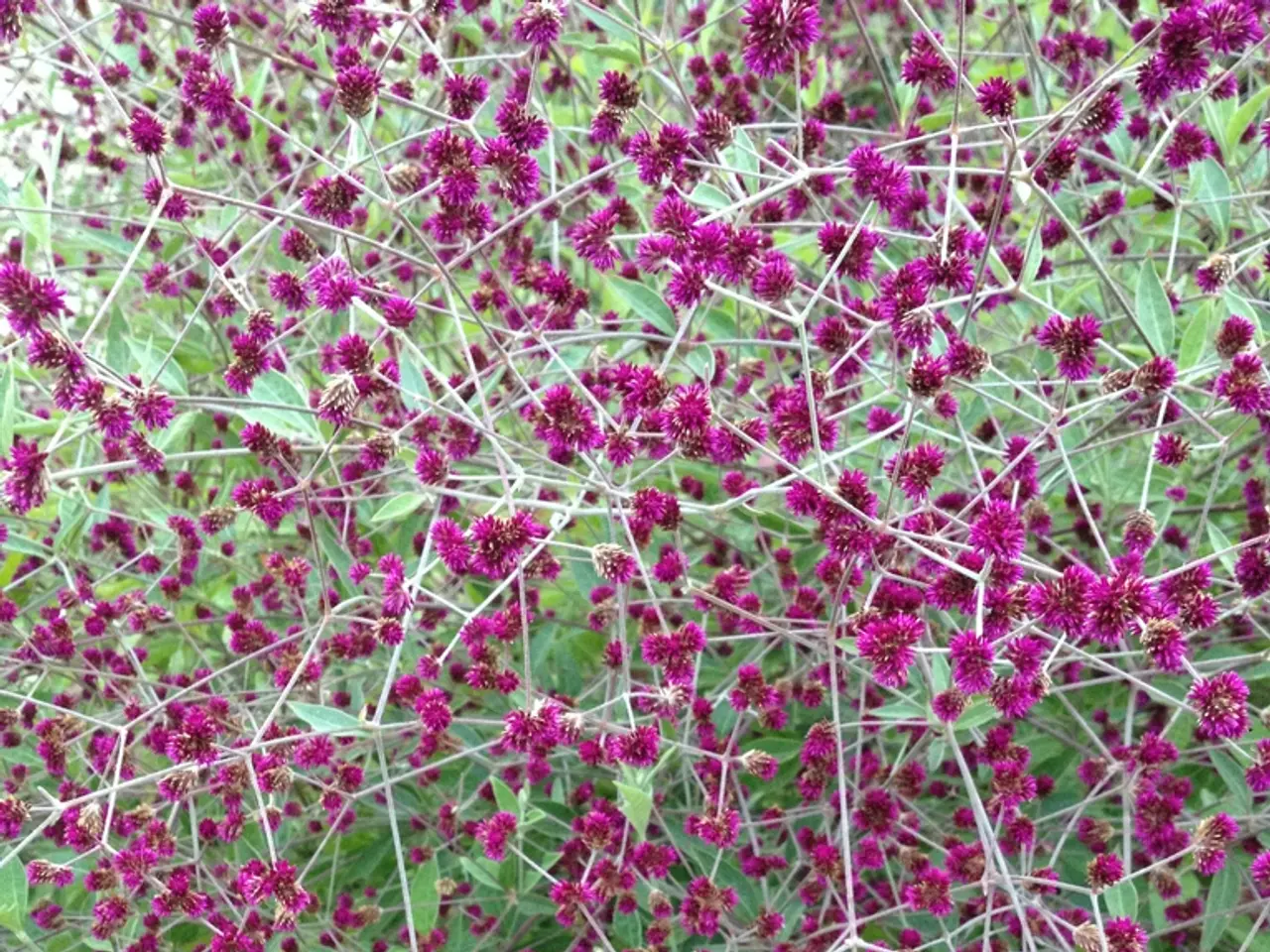Guide for Myoporum Growth: Tips for Cultivating Myoporum Successfully
The Charm of Creeping Boobialla: A Versatile, Resilient Native Shrub
Say hello to Creeping Boobialla (Myoporum parvifolium), a petite yet mighty evergreen shrub, usually not exceeding 30cm in height. These beauties bloom an array of white or pink flowers for most of the year, adding a dash of color to both native and modern-style gardens.
With their star-shaped, small pink or white flowers, these low-growing plants form dense growth across the ground and down along rockeries and retainer walls. One individual can spread an impressive 1-3m in width. The small, vibrant green leaves offer a fresh contrast to the flowering blooms.
Attracting beneficial insects, including bees, this tough little plant also thrives as a dense groundcover, acting almost like a resilient weed-deterring mat. It's drought and frost-tolerant once established, making it the perfect addition to your garden.
Besides the standard white and pink varieties, there's a variety of myoporums available in hues of pink, white, and purple. Check with your hardware or garden center for a variety that'll suit your local environment. Here are a few favorites:
- 'Coarse Pink' boasts starry pale lilac-pink flowers that illuminate any area from spring to summer. Distinct from other pink myoporums due to its thicker leaves, it offers a more rugged, eye-catching appearance. Use it in your flower beds and borders.
- 'Yareena' is a striking Aussie native ground cover, boasting thick, woody stems with deep green foliage that emerges in spring and summer. This drought and frost-tolerant variety adds a touch of modern-day appeal to your garden.
- 'Purpurea' is a prostrate shrub with glossy, purple leaves that create a bold contrast with a shower of white, honey-scented, waxy small flowers that adorn the stems from spring to summer.
Growing Conditions
Creeping boobialla thrives in a range of conditions. It can nestle in a sunny, bright location or enjoy the company of some light shade under native trees.
It can tolerate a variety of soil types, taken with a grain of salt as long as they are well-drained. However, it does show a preference for slightly acidic soil, with a pH of below 7.
With its resilient nature, creeping boobialla adapts to most climates, from cool temperate to subtropical, making it a versatile companion for your garden. Once established, it proves to be generally frost and drought-tolerant.
General Care
During the establishment phase, water these plants regularly and deeply. As they become more established, they'll require less water, becoming mainly drought-tolerant.
Feed your creeping boobialla with a fertiliser formulated for native plants like PowerFeed All Purpose including Natives or PowerFeed PRO SERIES Plant Food All Purpose including Natives. These nutrients will give your plants a much-needed boost. A seasonal application of a granular fertiliser, such as our website's Nutrients All Purpose including Natives, will also benefit your plants.
Mulch with fine gravel or organic mulch to discourage pesky weeds and retain moisture in the soil. Prune to shape or control spread if necessary or to revitalize the plants.
Keep an eye out for common issues like potential attacks by thrips or susceptibility to root rot in poorly drained soils. Root rot can be addressed with proper drainage, while thrips can be controlled with natural pyrethrum spray.
Although invasive in some regions, this tough little plant is a hardy ground cover that attracts native bees, offering a low-maintenance, visually pleasing addition to your garden. However, it's crucial to check local regulations before planting it to prevent negatively impacting native ecosystems.
- For a flourishing creeping boobialla, choose a fertiliser suitable for native plants, such as PowerFeed All Purpose including Natives or PowerFeed PRO SERIES Plant Food All Purpose including Natives, to provide essential nutrients.
- To maintain the health and appearance of your creeping boobialla, consider using mulch made of fine gravel or organic matter to keep weeds at bay and conserve soil moisture.
- Follow a regular watering and pruning schedule according to your lifestyle and the specific needs of your garden, ensuring adequate hydration during the establishment phase and less water once the plants are well-established.
- A seasonal application of a granular fertiliser, like Nutrients All Purpose including Natives from our website, can offer additional benefits and further boost the growth of your creeping boobialla.








